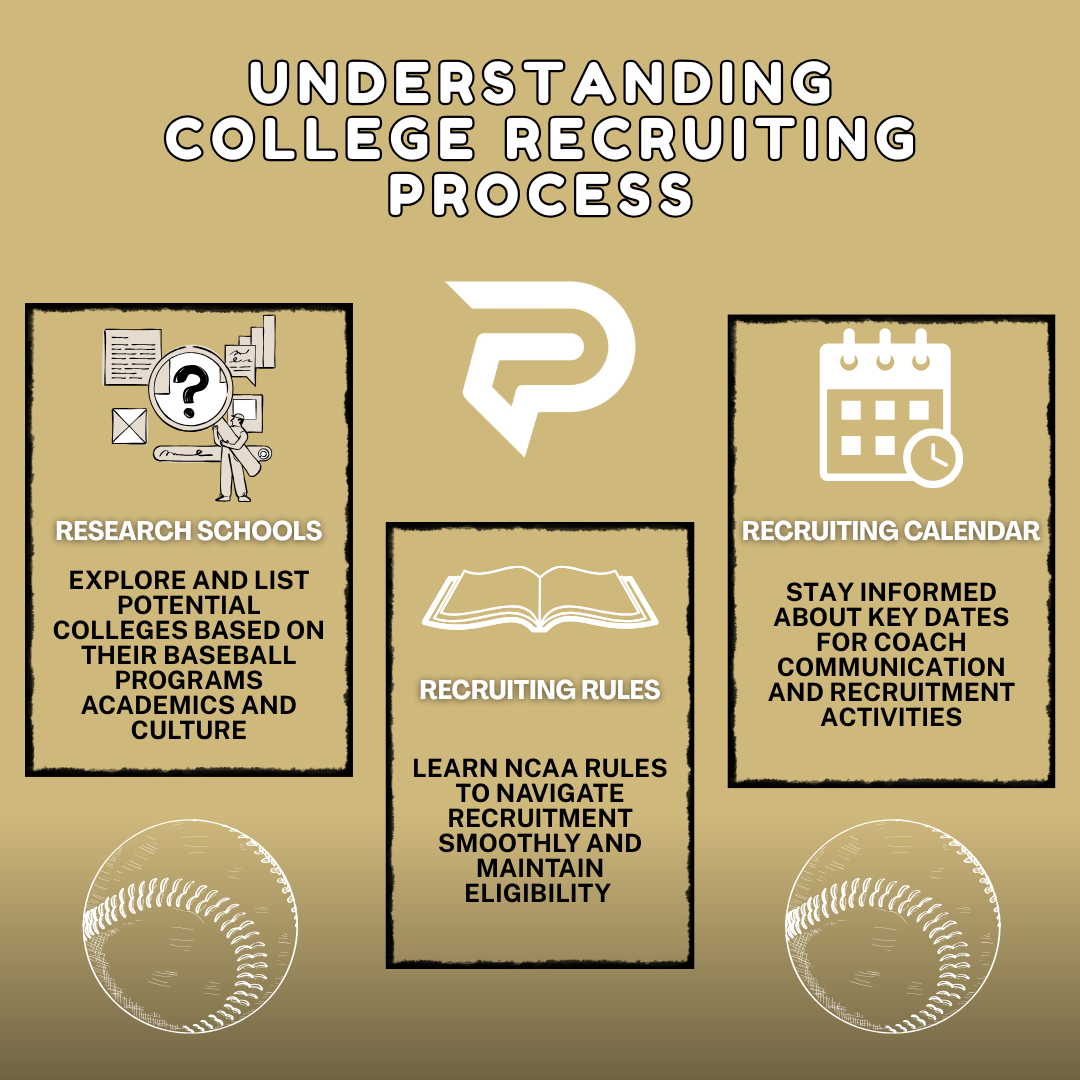How College Baseball Recruiting Has Changed: What Every Athlete and Parent Should Know
If you're navigating the college baseball recruiting world in 2025, you’re operating in a very different environment than players were even five years ago. From early recruiting timelines to the impact of NIL deals, the Transfer Portal, and a rising demand for JUCO talent, the game has changed — and not just on the field.
Here’s a breakdown of how recruiting has evolved and what today’s athletes and families should be prepared for:
1. Earlier Recruiting Timelines
College coaches are identifying and evaluating players younger than ever. Freshmen and sophomores in high school are already on radars, attending showcases and communicating with recruiters. While the NCAA has tried to push back against early recruiting by restricting contact dates, unofficial visits, social media activity, and summer ball performances often fill that gap.
The Hard Truth: If you’re waiting until junior year to get serious, you may already be behind.
2. Technology + Metrics Rule
Today’s players are evaluated as much on data and video as they are on live performance. Tools like Rapsodo, Trackman, Blast Motion, Pocket Radar, and StatStak offer objective benchmarks for velocity, exit speed, spin rate, and more.
Video + verified metrics = exposure. Coaches now expect players to provide updated performance footage and measurable progress over time.
At Pipeline Sports Performance, we offer HitTrax, Rapsodo, and other advanced tracking tools to help athletes capture this data — giving them a competitive edge in the recruiting process. We turn training into exposure by pairing skill development with the verified data coaches want to see.
3. Showcase & Travel Ball Exposure
College coaches now have the luxury to attend one location and see upwards of 25+ top tier athletes versus attending a high school game to see 1-2 players they are interested in. It is important for high level players to attend larger events such as PBR, Perfect Game, and USA Baseball to gain visibility. This has unfortunately led to a “showcase culture” that can be costly and overwhelming — especially for families without a clear strategy.
Tip: Target events where schools you're interested in will actually be attending. Exposure without a plan = noise.
Pipeline Prime was built with a clear purpose: to provide serious athletes with the structure, coaching, and competition needed to reach their full potential. While recruiting exposure is part of the journey, our focus starts with development — teaching players how to train, compete, and carry themselves at the next level. As our athletes' skill level and age goes up, we strive to provide them with opportunities to showcase those skills at the highest level of competition. This is all in hopes to achieve their goal of playing at the next level.
4. NIL (Name, Image, Likeness) Changes Everything
With NIL deals now allowed across all NCAA divisions, the recruiting landscape is impacted by branding, visibility, and player marketability. While baseball players typically don't earn as much as football or basketball athletes, opportunities still exist — especially for those with a social media presence or standout performance.
What It Means: College decisions are no longer just about playing time or academics — NIL opportunities can influence a player’s choice of school.
5. The Transfer Portal Is a Game-Changer
The NCAA Transfer Portal has fundamentally shifted how rosters are built. Coaches now recruit from the portal first, looking for proven college talent before investing in high school players.
This has created:
Fewer scholarship spots for incoming freshmen
A need for high school players to stand out even more
More movement and uncertainty, even after committing
6. JUCO Is More Valuable Than Ever
Junior Colleges (JUCOs) have become a fast track to D1 for many athletes — especially pitchers. With the rise in transfers and fewer freshmen making immediate impacts, JUCOs offer development, exposure, and eligibility flexibility.
JUCO recruiting is no longer a fallback — it’s often a strategic first choice.
7. Development Still Wins
With all these changes, one truth remains: Players who develop skill, strength, and consistency still rise to the top.
Modern recruiting priorities include:
Performance metrics (exit velo, pop time, pitch velocity)
Repeatable mechanics and approach
Athleticism, versatility, and baseball IQ
Strong character and communication
At Pipeline Sports Performance, development is at the core of everything we do. From individualized programming to high-level instruction and cutting-edge tech, we help athletes build the foundation college coaches are looking for. Skill matters — and we help you build it.
What Parents & Athletes Should Do
Start early: If you feel like you are in the top 10% of athletes in you area, it is important to attend targeted events as early as 8th / 9th grade to get on a school's radar
Track everything: Use a performance platform (like StatStak or PBR player profiles)
Film often: Short videos showing drills and game clips matter
Email and follow up: Don’t wait for coaches to find you
Work with someone you trust: A coach or program that understands this new landscape is invaluable
Final Thoughts
College baseball recruiting has never been more competitive, more digital, or more complex. Between NIL, the Transfer Portal, earlier commitments, and JUCO ascension, players now face more choices — and more pressure — than ever before.
At Pipeline Sports Performance, we’re committed to helping athletes build the tools, exposure, and guidance they need to succeed in today’s recruiting world. Whether it’s through lessons, metrics tracking, our Pipeline Prime program, or strategic recruiting support — we're here to help you play at the next level.

